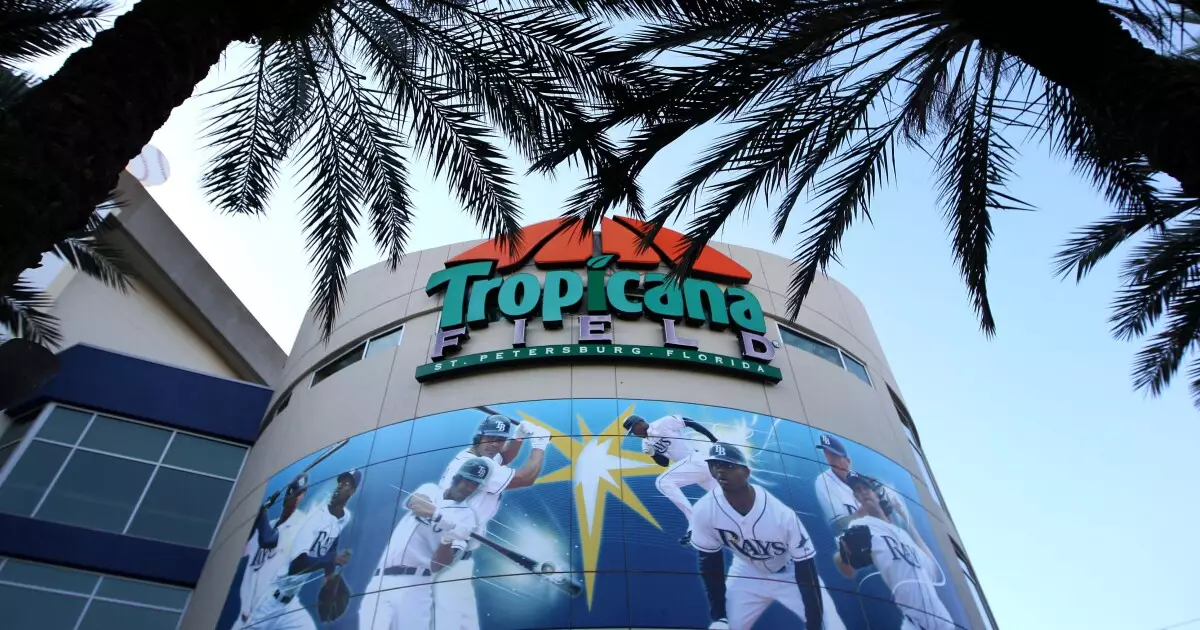The ongoing discussions surrounding the financing of a new stadium for the Tampa Bay Rays have recently intensified, exposing cracks in the relationship between the Pinellas County Commission and the Major League Baseball team. Up until now, both parties had spoken of a hopeful future, but recent events have sowed doubt and frustration. The county commission’s decision to postpone voting on $312 million in bonds critical to the new stadium’s financing has left the team publicly expressing its concerns about the implications of this delay.
The Rays’ projected timeline for a new ballpark delivery has significantly shifted, following a lack of approval for bond funding, putting their plans for a 2028 stadium into jeopardy. The team’s communication with the commission elaborated that if they had to push the ballpark’s completion to 2029, this would incur significantly higher costs that they could not cover independently. This situation is emblematic of a larger tension brewing between the local government, which appears hesitant to provide financial backing, and the organization, which feels it has been waiting far too long for a resolution to the stadium issue.
The debate over the funding for a new stadium isn’t occurring in a vacuum. In the last few months, natural disasters—including Hurricanes Helene and Milton—have altered the landscape of public funding and priorities. With the county recovering from these hurricanes, opinions among commissioners vary widely. Some see the potential financial benefits of a new stadium as vital for local economic development, while others critique the Rays for being less than engaging corporate citizens during this recovery period.
Joseph Krist, a publisher at Muni Credit Today, emphasized that timing is pivotal in the ongoing negotiations between the Rays and the county. Merely two months ago, optimism pervaded discussions about the possibility of a new stadium—the narrative has abruptly changed. The post-hurricane environment casts a shadow over any potential support for financing public projects.
The key players within the county commission have voiced differing perspectives on the Rays’ approach. While some commissioners are inclined to support the stadium project due to its promise of economic stimulation and potential tax revenue generation, others are cautious, noting how few tourists actively engage with the team. A recent survey indicated that only 3% of tourists in the city attended a Rays game, making the proposed financing seem less justifiable to some elected officials. This significant statistic calls into question the benefit of using hotel tax revenues for the expected stadium bond, highlighting a disconnection between the team’s aspirations and the actual interest of potential patrons.
As county Commissioner Chris Sherer eloquently stated, the push for a bond vote seems misguided given the circumstances surrounding the recovery efforts from the recent hurricanes. This sentiment echoes through the commission, where a feeling of insensitivity from the Rays has resonated amid the digestion of the recent challenges faced by the community.
The Rays have long held aspirations for a new stadium, which comes hand in hand with a separate development initiative in the Historic Gas Plant District. However, the potential degeneration of these two interlinked agreements due to funding complications leaves the team vulnerable and questioning its future stability in Tampa Bay. The damage from Hurricane Milton has only added to the team’s challenges, with the need for extensive repairs to Tropicana Field, expected to cost around $56 million, pushing the timeline for the Rays’ operations securely into uncertainty.
With the team now stating their intention to play the 2025 season at George Steinbrenner Field, questions arise about the implications for attendance, revenue, and fan engagement. Pinellas County’s taxpayers may find themselves bearing some of these costs, which raises concerns as they grapple with recovery from disasters while sustaining support for a team that is wedged in turmoil.
As the Dec. 17 meeting approaches, it remains to be seen whether the relationship between the Rays and the Pinellas County Commission can be mended or if the continued friction could signal a more significant fallout for major league baseball in the Tampa Bay area. The stakes are high, and the outcome of these decisions will prove pivotal in shaping the landscape of sports and community affairs in the region.

